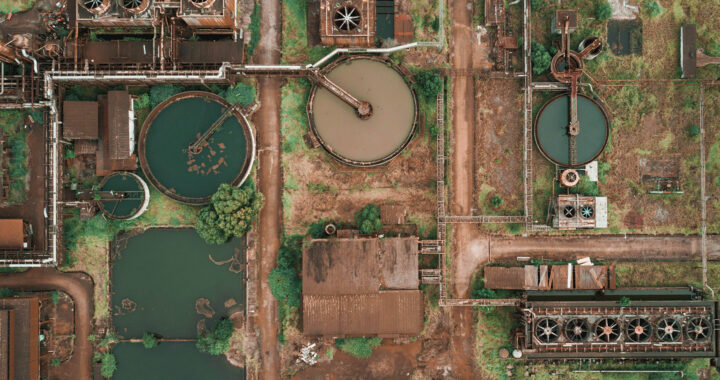Municipal wastewater carries a complex mixture of chemicals, microbes, and antibiotic residues that reflect human activity and medical practice across continents. Scientists have long suspected that these environments fuel antibiotic resistance and the eventual emergence of antibiotic-resistant bacterial strains and species. But a global study involving 47 countries reveals unexpected patterns that challenge widely held assumptions about sewage ecology.
Not All Wastewater Breeds Antimicrobial Resistance: How Municipal Wastewater Fights Resistant Bacteria
Research led by the University of Gothenburg uncovers a surprising trend that challenges assumptions surrounding the development of antibiotic resistance in the environment. Raw wastewater often disadvantages resistant bacteria rather than empowering them.
Examining Municipal Wastewater
A team of researchers headed by D. G. Joakim Larsson and the Centre for Antibiotic Resistance Research at the University of Gothenburg examined municipal wastewater from 47 countries to evaluate its effect on antibiotic-resistant Escherichia coli. Their findings are discussed and detailed in a paper published on 3 November 2025 in Nature Communications.
The study specifically collected 49 untreated wastewater samples from 47 countries and removed all natural microbes through sterile filtration. They then introduced a laboratory community of 340 different E. coli strains into each sample to allow them to measure how the chemical environment alone influenced the growth of resistant and nonresistant bacteria.
Each wastewater sample was mixed with 10 percent nutrient broth, incubated, and transferred into fresh medium after 24 and 48 hours to simulate continued growth over 72 hours. The researchers compared the proportion of resistant E. coli strains at the start and end of the experiment to check and determine whether antimicrobial resistance increased or decreased.
The researchers repeated the tests using natural microbial communities from six countries. These experiments evaluated whether native bacteria and chemical mixtures would create similar selection patterns to enable the team to verify that laboratory results and dynamics accurately reflected ecological dynamics in actual wastewater environmental conditions.
What the Experiments Revealed
Results revealed that the majority of wastewater samples suppressed antibiotic-resistant E. coli, with 14 of the 49 samples causing positive selection for at least one antibiotic class. Widespread deselection indicates that resistant strains face competitive disadvantages when antibiotic concentrations are insufficient to drive a growth advantage. Below are the details:
• Weak Correlation With Chemical Drivers
None of the 22 measured antibiotics consistently explained the observed selection outcomes. Even though some antibiotics exceeded predicted thresholds for selection, chemical concentrations correlated only weakly with resistance patterns. This suggests that unmeasured compounds or complex mixtures may be the real drivers.
• Specific Fitness Cost Of Antibiotic Resistance
The research explained that antibiotic resistance often imposes a metabolic disadvantage or costs on specific strains and species of bacteria. To be specific, in environments where antibiotic pressure is weak, non‑resistant E. coli grew faster and outcompeted resistant strains, thereby contributing to widespread deselection.
• Validation in Natural Or Real-World Communities
Experiments using real native wastewater microbial communities produced results that are largely consistent with the findings from the synthetic community. Locations that selected for resistance in the synthetic E. coli also did so in natural communities, while many that caused deselection in the synthetic mix did the same in the native mix.
• Notable and Specific Variation By Antibiotic Type
It is also worth noting that the strongest and most frequent deselection was observed for resistance involving the sulfamethoxazole-trimethoprim and ciprofloxacin compounds. On the other hand, positive selection occurred more frequently for amoxicillin-clavulanic acid tobramycin compounds. Note that these are common antibiotics.
Impacts on Surveillance and Policy
The findings challenge the conventional view among scientists that municipal wastewaters serve as breeding grounds for the development of antibiotic resistance among bacteria. The widespread suppression of resistant E. coli suggests that many wastewater environments act as buffers, limiting the competitive advantage of resistant strains rather than amplifying them.
Moreover, from a public-health perspective, the outcomes are cautiously encouraging. Widespread deselection could reduce the risk of antibiotic resistance amplification in sewage systems and other similar wastewater facilities. However, the positive selection observed in 14 samples demonstrates that local conditions can still create hotspots for antibiotic resistance evolution.
The study underscores the importance of targeted global surveillance. Monitoring wastewater from identified locations with positive selection trends allows the development and deployment of intervention strategies, which include enhanced treatment, chemical regulation, and reduction of antibiotic exposure, to be applied precisely where they are most needed.
Future research must investigate chemical mixtures, unmeasured compounds, and co-selection mechanisms to understand wastewater resistomes or the collection of all antibiotic resistance genes. Broader temporal sampling and inclusion of additional bacterial species will improve predictive capacity and guide policies to minimize antibiotic resistance proliferation.
FURTHER READING AND REFERENCE
- Yu, Z., Gray, D. A., Fick, J., Waters, N., Lindberg, R., Grabic, R., Tysklind, M., Ekwanzala, M. D., Martiny, H.-M., Flach, C.-F., Aarestrup, F. M., and Larsson, D. G. J. 2025. “Antibiotic Resistance Selection and Deselection in Municipal Wastewater from 47 Countries.” Nature Communications. 16(1). DOI: 1038/s41467-025-65670-7
